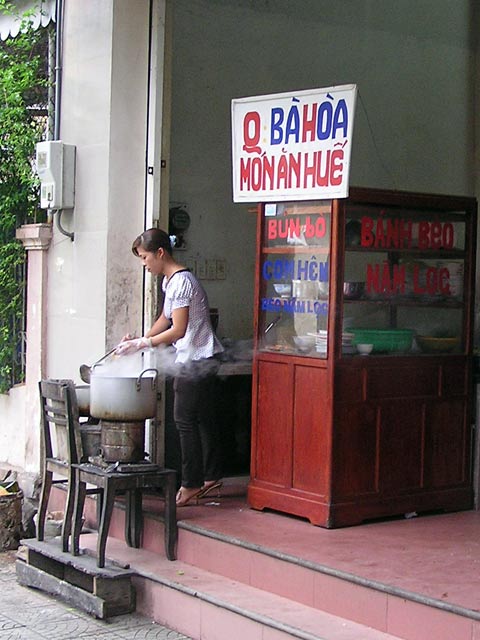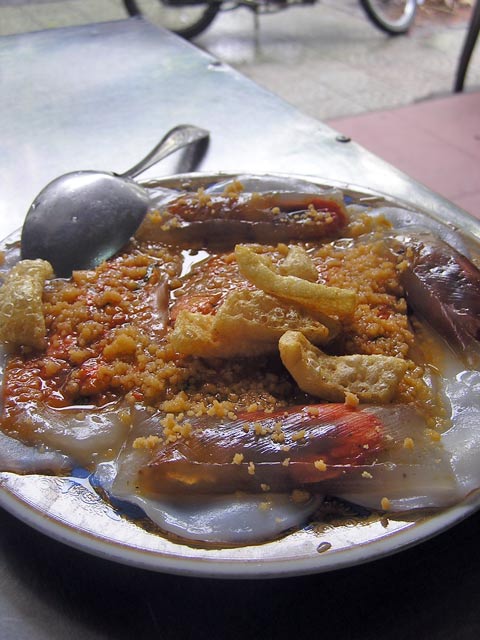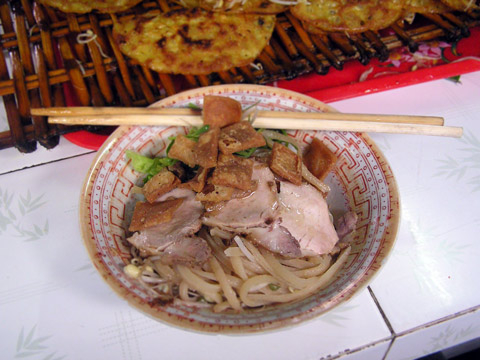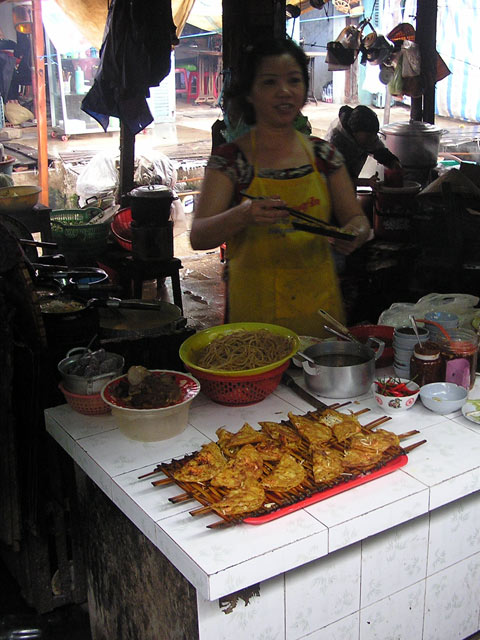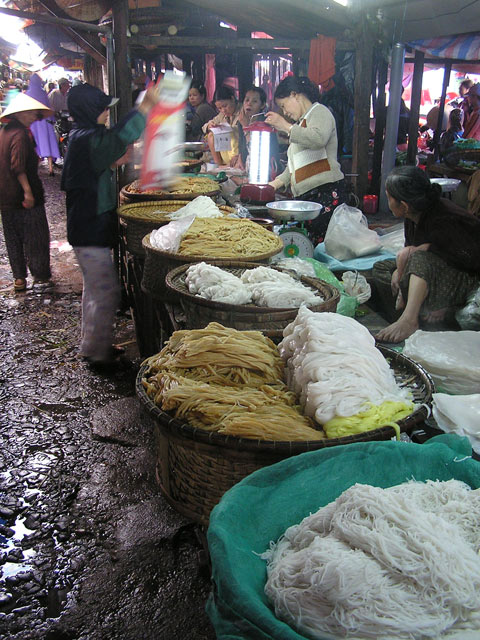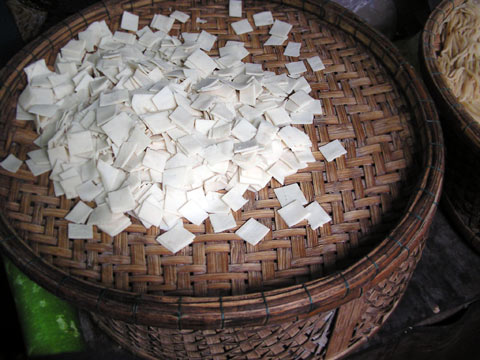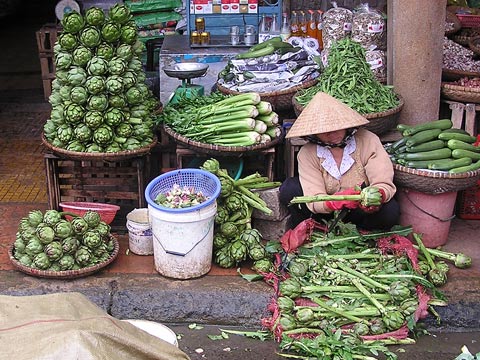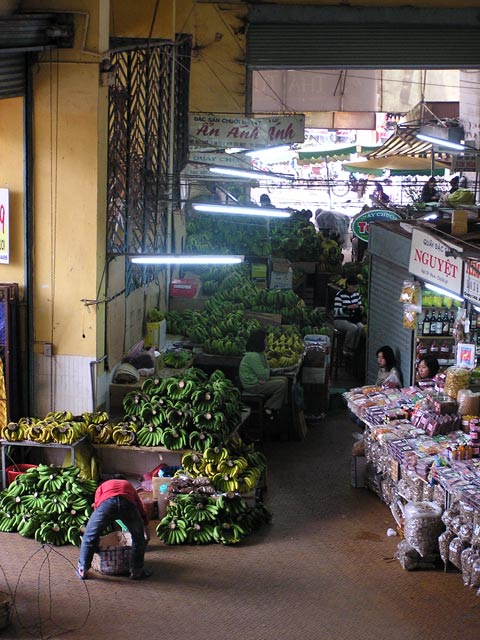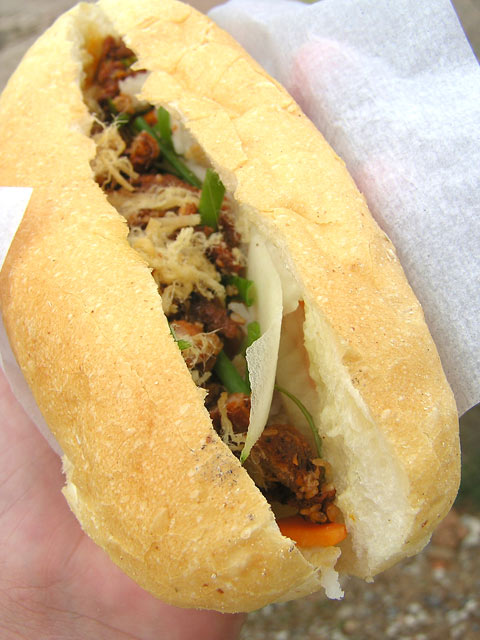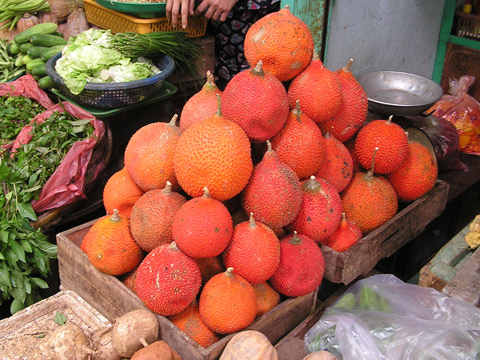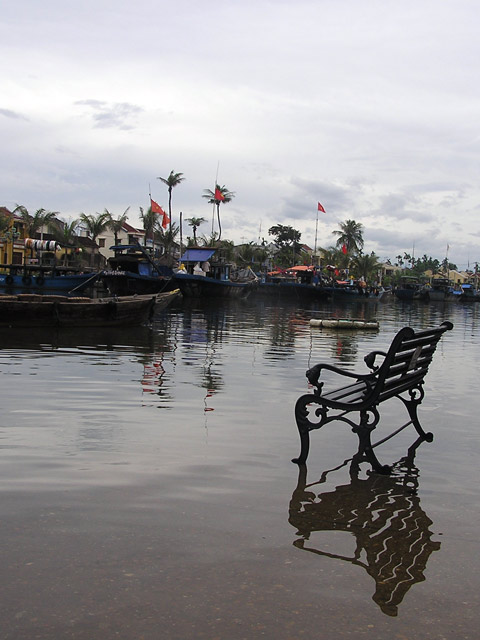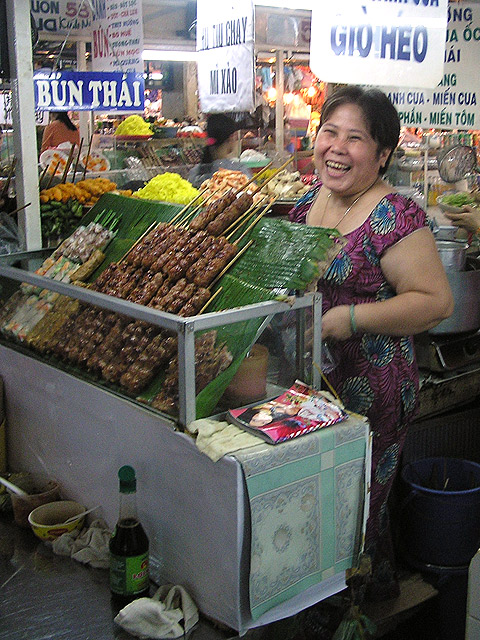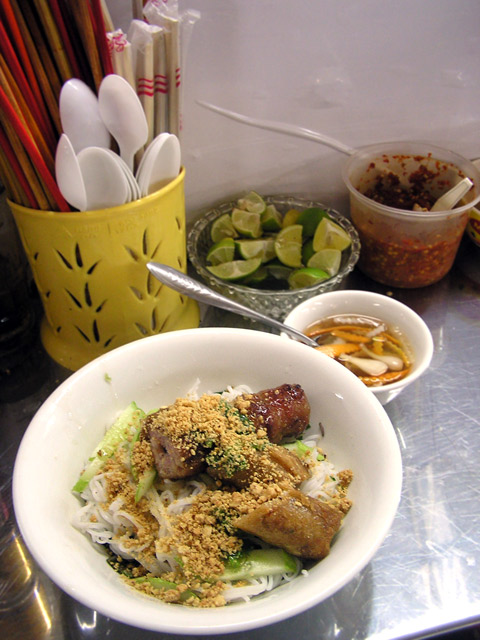I generally don’t fail when I’m hunting for street food. I take wrong turns, missteps into blind alleys, but for the most part I find something worth eating.
Hue in central Vietnam defeated me.
My schooling in Vietnamese cuisine is more weighted towards the South than the North, due to the flow of southern refugees to Australia after the American War. My idea of central Vietnamese food tends to stretch as far as the occasional bowl of bun bo hue, although I had heard rumours of an Imperial cuisine, of sticky rice cakes in multitude variations, of a spicier and rich Vietnamese food. I still don’t know where that is located but I doubt that it is in Hue. The last vestiges of local restaurants that I could find seem to have been rendered bland by the constant stream of uncritical tourists; my efforts to find anything out in the ‘burbs fruitless and futile. Imperial cuisine seems to only exist as part of a day tour.
My small moment of success was on Truong Dinh St at Ba Hoa, a smallish street restaurant that sells nought but Hue regional specialties.
Ba Hoa trades in what I’d describe as a Hue Rice Cake Happy Meal. Banh beo, circles of rice cake topped with minced dried prawn and pork, corralled by gelatinous banh bot loc, rectangles of steamed tapioca flour each containing a chilli coated and slightly crispy whole dried prawn. The banh bot loc are are steamed in a rectangle of banana leaf and served cold and topped with a few strips of pork crackling. The plating reminded me of an upturned jellyfish, who prior to their beaching had a predilection for pork and fried onion. It seemed like a minor victory.
Location: Ba Hoa, 7 Truong Dinh St, Hue, Vietnam. Opposite is an identical restaurant; further down the street is a stand doing a roaring trade in sweet iced drinkche and local shellfish specialty, com hen.
Did I miss something in Hue? Is there a street food secret there waiting to be uncovered?
